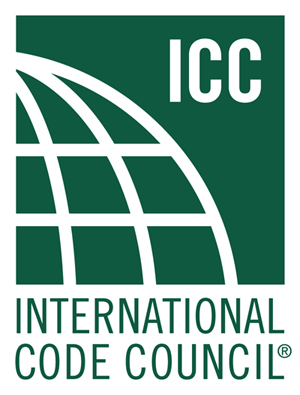Your cart is currently empty!
“Decoding the International Zoning Code for Urban Planning”

Urban planning is a critical component of sustainable development, influencing the way cities grow and evolve. The International Zoning Code (IZC) serves as a comprehensive framework designed to guide urban planners, architects, and local governments in creating orderly, efficient, and aesthetically pleasing urban environments. In this article, we will delve into the intricacies of the IZC, its key principles and objectives, its influence on global urban planning, and the challenges and benefits associated with its implementation. For more detailed insights, you can visit the IBC Manual.
Introduction to the International Zoning Code (IZC)
The International Zoning Code (IZC) is a globally recognized set of guidelines that provide a standardized approach to urban planning and development. Established to promote consistency and coherence in zoning practices worldwide, the IZC offers a structured framework that helps cities manage land use, building regulations, and community development. It serves as a vital tool for urban planners, ensuring that cities can grow in a balanced and sustainable manner.
The IZC is designed to be adaptable, allowing it to be applied in diverse cultural and geographical contexts. This flexibility ensures that the code can meet the unique needs of different regions while maintaining a core set of principles that promote orderly development. By providing a common language and set of standards, the IZC facilitates international collaboration and knowledge sharing among urban planners and policymakers.
One of the primary functions of the IZC is to delineate various zoning categories, such as residential, commercial, industrial, and mixed-use areas. These categories help to organize urban spaces, ensuring that different types of land uses are appropriately allocated and managed. This organization is crucial for minimizing conflicts between incompatible land uses and for promoting harmonious urban development.
The IZC also includes detailed regulations on building height, density, setbacks, and other critical aspects of urban design. These regulations help to create a cohesive urban fabric, ensuring that buildings and infrastructure are designed in a way that enhances the overall aesthetic and functional quality of the city. By setting clear standards, the IZC helps to prevent haphazard development and promotes a more orderly and attractive urban environment.
In addition to its regulatory functions, the IZC serves as an educational resource for urban planners and local governments. It provides comprehensive guidelines and best practices that can be used to inform urban planning decisions and policies. This educational aspect of the IZC is crucial for building the capacity of local governments and ensuring that they have the knowledge and tools needed to implement effective urban planning strategies.
Overall, the IZC plays a vital role in shaping the development of cities around the world. By providing a standardized framework for zoning and urban design, it helps to promote sustainable, efficient, and aesthetically pleasing urban environments. For further details on the IZC, you can visit the IBC Manual.
Key Principles and Objectives of the IZC
The International Zoning Code (IZC) is underpinned by several key principles and objectives that guide its application and ensure its effectiveness in urban planning. One of the primary principles is sustainability. The IZC is designed to promote sustainable development practices that minimize environmental impact and ensure the long-term viability of urban areas. This includes guidelines for energy-efficient building design, sustainable land use practices, and the preservation of natural resources.
Another fundamental principle of the IZC is equity. The code aims to create inclusive urban environments that provide equal opportunities and access to resources for all residents. This includes ensuring that affordable housing is available, that public spaces are accessible to everyone, and that communities are designed to be inclusive and welcoming. By promoting equity, the IZC helps to create cities that are not only functional but also socially just.
The IZC also emphasizes the importance of safety in urban planning. This includes regulations for building safety, fire protection, and emergency access. By setting high standards for safety, the IZC helps to protect residents and ensure that cities are resilient in the face of disasters and emergencies. This focus on safety is crucial for creating urban environments that are not only livable but also secure.
Efficiency is another key objective of the IZC. The code promotes efficient land use practices that maximize the use of available space and resources. This includes guidelines for compact, mixed-use development that reduces the need for extensive infrastructure and promotes walkability and public transportation. By encouraging efficient land use, the IZC helps to create cities that are both functional and sustainable.
Aesthetic quality is also a core principle of the IZC. The code includes guidelines for architectural design, landscaping, and urban design that enhance the visual appeal of urban areas. This focus on aesthetics helps to create attractive and vibrant cities that are pleasant to live in and visit. By promoting high standards of design, the IZC helps to elevate the overall quality of the urban environment.
Finally, the IZC aims to promote adaptability and resilience in urban planning. This includes guidelines for flexible land use practices and the incorporation of adaptive reuse strategies. By promoting adaptability, the IZC helps cities to respond to changing needs and conditions, ensuring that they remain functional and vibrant over time. For more detailed information on the principles and objectives of the IZC, you can visit the IBC Manual.
How the IZC Influences Global Urban Planning
The International Zoning Code (IZC) has a significant influence on global urban planning by providing a standardized framework that can be adapted to various cultural and geographic contexts. This standardization facilitates international collaboration and the sharing of best practices among urban planners and policymakers. By adopting the IZC, cities around the world can benefit from a consistent approach to zoning and urban development, which helps to create more cohesive and well-planned urban environments.
One of the ways the IZC influences global urban planning is by promoting sustainable development practices. The code includes guidelines for energy-efficient building design, sustainable land use practices, and the preservation of natural resources. By encouraging cities to adopt these practices, the IZC helps to minimize environmental impact and promote long-term sustainability. This is particularly important in the context of global challenges such as climate change and resource depletion.
The IZC also plays a crucial role in promoting equity in urban planning. By providing guidelines for inclusive urban design and affordable housing, the code helps to ensure that all residents have access to resources and opportunities. This focus on equity is essential for creating socially just cities that provide a high quality of life for all residents. By promoting inclusive urban environments, the IZC helps to address issues of social inequality and ensure that cities are welcoming and accessible to everyone.
In addition to promoting sustainability and equity, the IZC also emphasizes the importance of safety in urban planning. The code includes regulations for building safety, fire protection, and emergency access, which help to protect residents and ensure that cities are resilient in the face of disasters and emergencies. By setting high standards for safety, the IZC helps to create urban environments that are not only livable but also secure.
The IZC’s focus on efficiency in land use also has a significant impact on global urban planning. By promoting compact, mixed-use development, the code helps to reduce the need for extensive infrastructure and promote walkability and public transportation. This efficient use of space and resources is essential for creating functional and sustainable cities. By encouraging efficient land use practices, the IZC helps to create urban environments that are both practical and sustainable.
Finally, the IZC’s emphasis on aesthetic quality and adaptability also influences global urban planning. By providing guidelines for architectural design, landscaping, and urban design, the code helps to create attractive and vibrant cities. This focus on aesthetics enhances the overall quality of the urban environment and makes cities more pleasant to live in and visit. Additionally, the IZC’s guidelines for adaptability and resilience help cities to respond to changing needs and conditions, ensuring that they remain functional and vibrant over time. For more information on the influence of the IZC on global urban planning, you can visit the IBC Manual.
Challenges and Benefits of Implementing the IZC
Implementing the International Zoning Code (IZC) comes with a set of challenges and benefits that urban planners and local governments must navigate. One of the primary challenges is the need for local adaptation. While the IZC provides a standardized framework, it must be adapted to fit the unique cultural, geographical, and socio-economic contexts of different regions. This can be a complex and time-consuming process that requires careful consideration and local expertise.
Another challenge is the potential resistance to change. Implementing the IZC may require significant changes to existing zoning practices and regulations, which can be met with resistance from stakeholders such as property owners, developers, and local communities. Overcoming this resistance requires effective communication, stakeholder engagement, and education to demonstrate the benefits of the IZC and build support for its implementation.
The cost of implementation is also a significant challenge. Adopting the IZC may require substantial financial investment in terms of updating zoning regulations, training urban planners and local government officials, and making necessary infrastructure improvements. Securing the necessary funding and resources can be a major hurdle, particularly for cities with limited financial capacity.
Despite these challenges, there are numerous benefits to implementing the IZC. One of the primary benefits is the promotion of sustainable development practices. By providing guidelines for energy-efficient building design, sustainable land use practices, and the preservation of natural resources, the IZC helps cities minimize their environmental impact and promote long-term sustainability. This is particularly important in the context of global challenges such as climate change and resource depletion.
Another significant benefit is the promotion of equity in urban planning. The IZC’s guidelines for inclusive urban design and affordable housing help to ensure that all residents have access to resources and opportunities. This focus on equity is essential for creating socially just cities that provide a high quality of life for all residents. By promoting inclusive urban environments, the IZC helps to address issues of social inequality and ensure that cities are welcoming and accessible to everyone.
Finally, the IZC helps to create more cohesive and well-planned urban environments. By providing a standardized framework for zoning and urban design, the code helps to promote consistency and
